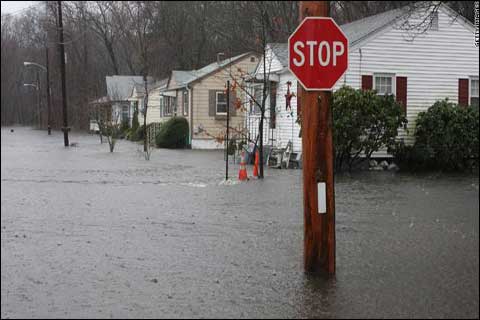
Recently, many places in Spain once again fell into the ravages of heavy rainfall, and the province of Malaga in the Andalusia Autonomous region and the coastal region of Valencia Autonomous Region have issued red alerts for heavy rain. This sudden natural disaster not only brought great troubles to the lives of local residents, but also exposed the shortcomings of Spain in dealing with extreme weather. This article will take an in-depth look at this heavy rainfall event, exploring the causes behind it, its impact and Spain's lack of response to climate change.
Recently, the province of Malaga welcomed a new round of heavy rain. According to the data of the Spanish National Weather agency, the cumulative rainfall in the local area in an hour was as high as 70 millimeters, which is a shocking figure. The torrential rain caused the Guadalose River and other rivers to rise rapidly, in order to prevent the river from overflowing, the local government had to evacuate 3,000 residents in the surrounding area. For a time, schools and shops were closed in many parts of Malaga province, many rail and metro trains were suspended, and several flights were cancelled or rerouted. The whole city seems to be shrouded in a thick haze, and the rhythm of life of residents is completely disrupted.
In the center of Malaga, the Guadalmedina River rose rapidly in just half an hour, alarming residents. "You can see the Guadalmedina River from here," one resident said in an interview. "It's 4 p.m., and the river is full." Another resident added: "It's 4.30pm and the Guadalmedina River in the centre of Malaga has become so strong." These words reveal the helplessness and fear of natural disasters.
Along with Malaga, the region of Valencia was also hit by heavy rainfall. In response to this sudden natural disaster, the Government of the Autonomous Region of Valencia announced a number of temporary measures. This includes the suspension of educational and sports-related activities and a ban on all private vehicles except those associated with essential activities and emergency services. These measures cover more than 160 municipalities.
However, this is not the first time Valencia has been hit by heavy rains. In late October, torrential rains in the region caused severe flooding that killed more than 220 people. Although the post-disaster cleanup and reconstruction work is still underway, the heavy rainfall has undoubtedly brought greater psychological shadow to local residents. Although the efforts of the government of the Autonomous region of Valencia in coping with the rainstorm are commendable, how to fundamentally solve the problem of extreme weather brought about by climate change is still a difficult problem in front of them.
The recent spate of heavy rains in Spain has its roots in climate change. As cold air blows over warm Mediterranean waters, the hot air quickly rises to form dense rain clouds, dousing parts of Spain bordering the Mediterranean, Agence France-Presse reported. The huge rain clouds generated by the encounter of hot and cold air are the main reason for the frequent rainstorms.
Extreme weather is increasing in intensity, duration and frequency in many parts of the world due to climate change, researchers have warned. The risk of drought and flood cycles is also on the rise in some regions, posing unprecedented challenges to human society. In Spain, the frequency of such extreme weather has caused huge losses to the local economy, society and ecological environment. If no action is taken to address climate change, the world will experience more extreme weather events such as droughts, heat, and heavy rains.
In the face of the serious challenges posed by climate change, Spain is struggling to cope. Although the government has taken a number of measures to reduce greenhouse gas emissions and promote renewable energy, these efforts are not enough to deal with the growing problem of extreme weather.
First, Spain has an infrastructure deficit. Especially in terms of flood control and drainage, the drainage system of many cities has been unable to meet the demand for drainage in extreme weather. As a result, when heavy rains hit, the city is prone to waterlogging, which brings great inconvenience to residents.
Second, Spain has much to do in terms of climate adaptation and resilience. Although the government has invested heavily in post-disaster reconstruction and recovery efforts, it has not been able to improve urban climate resilience and resilience. This makes it often difficult for cities to quickly return to normal operations when extreme weather events occur.
In addition, Spain's international cooperation in the fight against climate change is not active enough. Climate change is a global issue that requires a joint response by all countries. However, Spain's cooperation with other countries in the field of climate change still needs to be strengthened, and there is a lack of adequate international support and cooperation mechanisms to jointly deal with extreme weather issues.
The return of heavy rainfall in many parts of Spain has once again sounded the alarm about climate change. In the face of the growing problem of extreme weather, Spain must take more active and effective measures to meet the challenges posed by climate change. This includes strengthening infrastructure, making cities more resilient and resilient to climate change, promoting renewable energy, and strengthening international cooperation. This is the only way to ensure that Spain can cope with the more severe challenges of climate change in the future and reduce the damage.
However, this will not happen overnight. Spain needs government, business and citizens to work together to win the battle against climate change. It is hoped that Spain can take this opportunity to deeply reflect on its shortcomings in addressing climate change and take effective measures to improve them. This is the only way to ensure the sustainable development of Spain and the well-being of its people.

Driven by the Trump administration's push to relax financial regulations and the recovery of investment banking business, the market value of the six major banks in the United States has cumulatively increased by approximately 600 billion US dollars by 2025.
Driven by the Trump administration's push to relax financia…
On Christmas evening, U.S. President Trump posted on social…
According to multiple foreign media reports, the recent fin…
The middle class, once regarded as the cornerstone of Ameri…
On December 19th local time, the US military launched a lar…
The Boxing Day sunshine should have cast a false glow of pr…